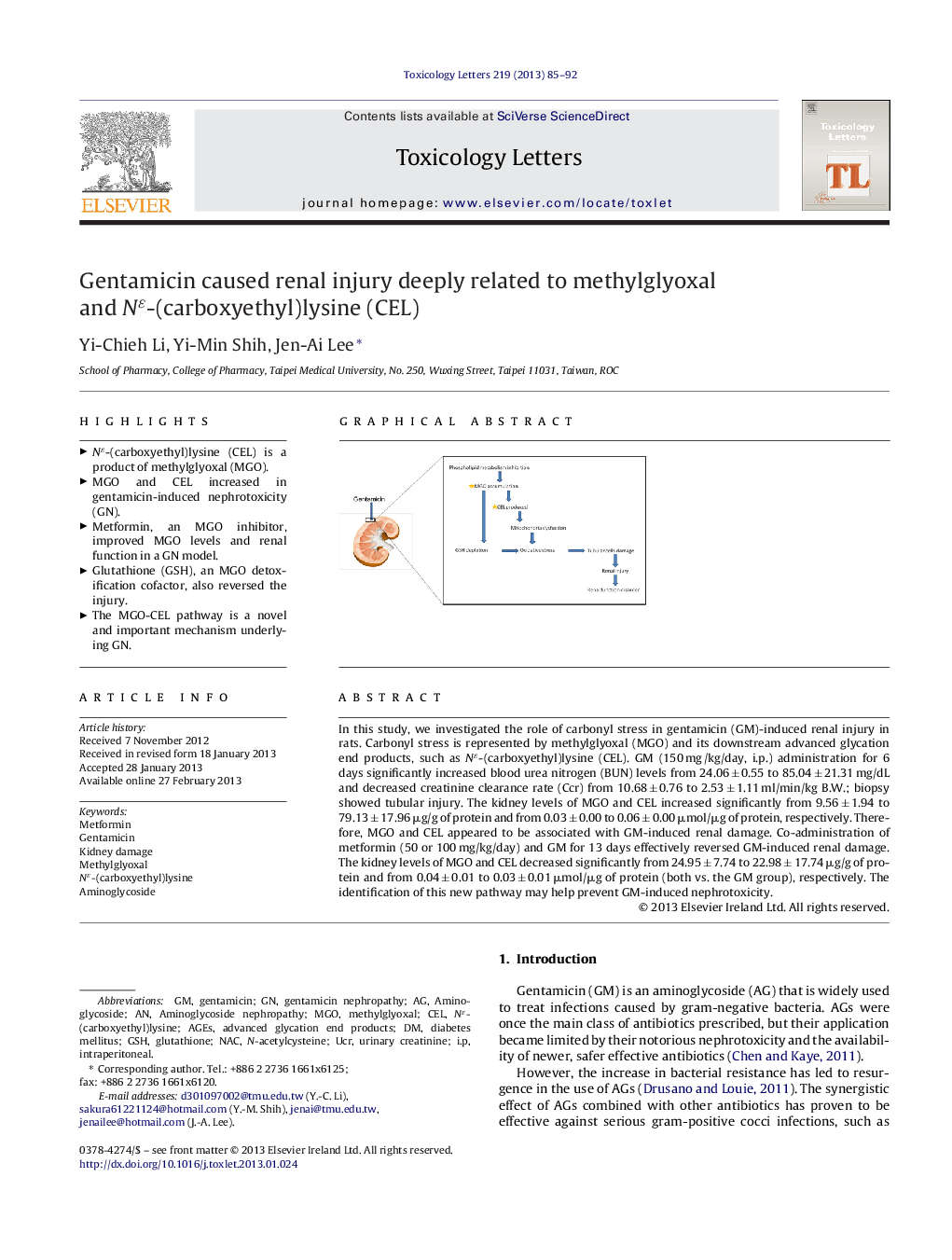| Article ID | Journal | Published Year | Pages | File Type |
|---|---|---|---|---|
| 2599437 | Toxicology Letters | 2013 | 8 Pages |
In this study, we investigated the role of carbonyl stress in gentamicin (GM)-induced renal injury in rats. Carbonyl stress is represented by methylglyoxal (MGO) and its downstream advanced glycation end products, such as Nɛ-(carboxyethyl)lysine (CEL). GM (150 mg /kg/day, i.p.) administration for 6 days significantly increased blood urea nitrogen (BUN) levels from 24.06 ± 0.55 to 85.04 ± 21.31 mg/dL and decreased creatinine clearance rate (Ccr) from 10.68 ± 0.76 to 2.53 ± 1.11 ml/min/kg B.W.; biopsy showed tubular injury. The kidney levels of MGO and CEL increased significantly from 9.56 ± 1.94 to 79.13 ± 17.96 μg/g of protein and from 0.03 ± 0.00 to 0.06 ± 0.00 μmol/μg of protein, respectively. Therefore, MGO and CEL appeared to be associated with GM-induced renal damage. Co-administration of metformin (50 or 100 mg/kg/day) and GM for 13 days effectively reversed GM-induced renal damage. The kidney levels of MGO and CEL decreased significantly from 24.95 ± 7.74 to 22.98 ± 17.74 μg/g of protein and from 0.04 ± 0.01 to 0.03 ± 0.01 μmol/μg of protein (both vs. the GM group), respectively. The identification of this new pathway may help prevent GM-induced nephrotoxicity.
Graphical abstractFigure optionsDownload full-size imageDownload as PowerPoint slideHighlights► Nɛ-(carboxyethyl)lysine (CEL) is a product of methylglyoxal (MGO). ► MGO and CEL increased in gentamicin-induced nephrotoxicity (GN). ► Metformin, an MGO inhibitor, improved MGO levels and renal function in a GN model. ► Glutathione (GSH), an MGO detoxification cofactor, also reversed the injury. ► The MGO-CEL pathway is a novel and important mechanism underlying GN.
